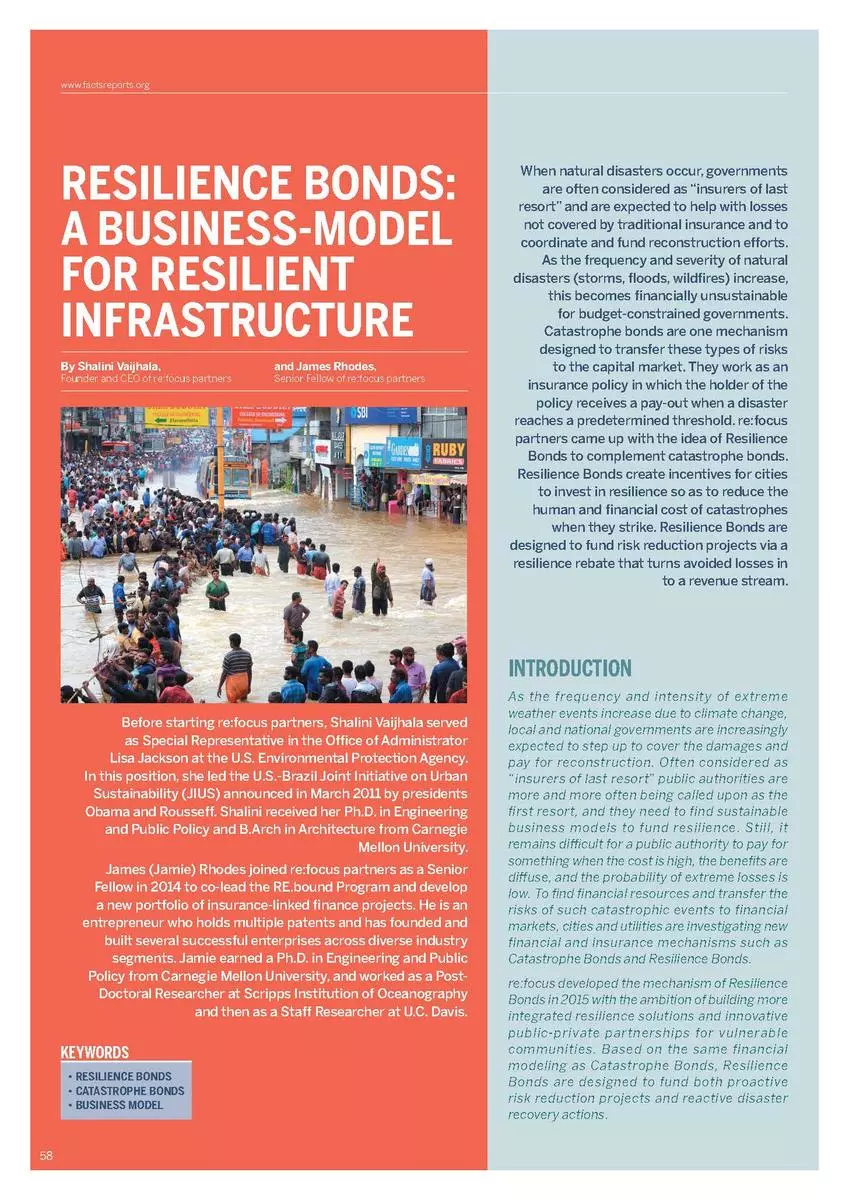By Shalini Vaijhala, Founder and CEO of re:focus partners
and James Rhodes, Senior Fellow of re:focus partners
When natural disasters occur, governments are often considered as “insurers of last resort” and are expected to help with losses not covered by traditional insurance and to coordinate and fund reconstruction efforts.
As the frequency and severity of natural disasters (storms, fl oods, wildfi res) increase, this becomes financially unsustainable for budget-constrained governments. Catastrophe bonds are one mechanism designed to transfer these types of risks to the capital market. They work as an insurance policy in which the holder of the policy receives a pay-out when a disaster reaches a predetermined threshold.
re:focus partners came up with the idea of Resilience Bonds to complement catastrophe bonds. Resilience Bonds create incentives for cities to invest in resilience so as to reduce the human and fi nancial cost of catastrophes when they strike. Resilience Bonds are designed to fund risk reduction projects via a resilience rebate that turns avoided losses in to a revenue stream.



